On single-sex schools

Written by Hollie Panther
DEI Lead, Mental Health First Aider, secondary Science & Psychology teacher and Teach First Ambassador.
Should they still exist in this day and age?
Currently in the UK around 10% of state secondary schools are single-sex (most secondary schools in England were single-sex until the 1970s in England, though in Scotland and Wales there has always been more of a co-ed approach). Broadly, I feel that segregating learners based on any characteristic that doesn’t directly affect their learning should stop (i.e. I’m still for schools that specialise in SEND and disability, and those that specialise in educating learners with behavioural issues — though I wonder if such learners would in fact benefit from incorporation into mainstream schools if done well, as opposed to lumping them in there due to budget restrictions?). Interestingly, nowadays it seems single-sex schools don’t technically prevent other-sexed learners from joining, just as religious schools don’t technically prevent learners joining who follow religions other than that the school centers on, and indeed, learners who come out as trans aren’t made to change schools, due to protection under the 2010 Equality Act.
When engaging with some of the research literature on this topic, it was difficult to find a clear answer as to whether single-sex schooling improves academic outcomes. With a critical hat on, it seemed much of the evidence may have been subject to confirmation bias — that is, that researchers set out to find support for their preferred method of education. There is some evidence for the idea that gender stereotypical subject uptake (i.e. English for girls and STEM for boys) occurs less in single-sex schools, but after I stumbled across a study published in possibly the most highly regarded journal within science, ‘Science’, I decided I’d look no further:
The authors argued that the movement towards single-sex education “is deeply misguided, and often justified by weak, cherry-picked, or misconstrued scientific claims rather than by valid scientific evidence”. The study goes on to conclude that “there is no well-designed research showing that single-sex education improves students’ academic performance, but there is evidence that sex segregation increases gender stereotyping and legitimizes institutional sexism.” (Halpern et al., 2011)
One more, slightly perpendicular, point on research in this area: I’d bet most of the research cited in arguments for single-sex schooling doesn’t consider trans and non-binary pupils. Interestingly, there is evidence suggesting that girls’ schools tend to be better set up to support gender-diverse pupils than boys’ or co-ed schools, due to their more critical and less binary approach to gender (Renz, 2020). It will be interesting to see what effects research finds on trans and non-binary pupils in different types of schools going forward, now that such learners are being considered more in this research area. Even though such pupils are a minority, their experiences are valid and deserve to be described when taking into account whether to legislate on single-sex schooling.
Having taught science in a ‘boys’’ school, I can’t say I noticed any advantages to it being single-sex. Female sixth formers talked of a culture of sexual harassment from younger male pupils which they believed came from girls not being usualised in the school. After trans and non-binary pupils started coming out in the school community, questions were raised as to whether to drop the ‘Boys’ from the school’s name altogether — I would be in favour of this, and more.
Ultimately, I’m against single-sex schooling as I can’t see any real benefits and don’t really see that it has a place within modern society. Single-sex education came about because society believed that men and women should learn different things, due to their differing abilities and also roles within society. Racial segregation in education came about for similar reasons, and no-one would suggest that was a sensible thing to continue, even if one race would do better out of single-race schools.
Let’s move forwards and scrap single-sex schools.
Don’t Look Back in ELT or LGBTQ* Lament
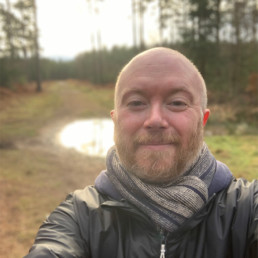
Written by Peter Fullagar
Self-employed ELT & DEI editor, writer and consultant. Creating Principled, Just & Fresh content.
I imagine for some of you reading this, you may have no idea what ELT is. Or EFL, ESP, EAL, EAP, ESL, ESOL … the acronyms are endless. I prefer to use ELT (English Language Teaching) to describe what I’ve been teaching and creating materials for over the last twenty years. For the other acronyms, I’ll put a small glossary at the end.
Yes, ELT has enabled many of us in the profession to travel the world and see different countries and cultures – usually on a minuscule pay packet, too. However, I’d like to see ELT on a par with ‘regular’ teaching and materials so that we can benefit from all our experiences and expertise together.
Like mainstream education, the ELT industry is working hard to become more inclusive and representative in its materials, not to mention its teams within publishing and teaching. Although I’m mainly focusing on materials here, I feel it’s worth mentioning that native speakerism is, unfortunately, still prevalent in the industry. Advertisements which specify for native English speakers are discriminating against the teachers who have gone through the process of learning and mastering another language. Invaluable experience, if you ask me. For an interesting (and successful) story, see Rachel Tsateri’s blog post on native speakerism and her personal experience.
Take an ELT coursebook published in the last twenty years and look through it, if you can. See how we represented people to learners of English. White, heteronormative, ‘Western’ (UK & US), non-disabled, middle class, neurotypical, stereotypically gendered and aged, slim … I could go on. One particular activities book, published in 2001, looks at ‘controversial’ issues, with ‘Gays and jobs’ being one unit. I discuss this in a blog post – Queerience: I am neither a taboo nor an issue. OK, so it’s twenty years old, but did we really think that was acceptable even then?
As a gay (queer) cis man, I’m determined to make a difference to help represent the LGBTQ* community in ELT materials. Out of the protected characteristics, it will probably be the last one to be addressed in ELT. Some of the biggest ELT markets are also those that criminalise LGBTQ*. According to the Human Dignity Trust, 71 jurisdictions criminalise private, consensual, same-sex sexual activity. Almost half of these are in the Commonwealth. Therefore, one of the biggest issues for me is how can we represent marginalised communities in countries where the very essence of the identity is forbidden? How do we reach those people in those countries who identify as part of the forbidden community? If people don’t see themselves represented, then they may believe that their very being is wrong. That’s what growing up in Section 28 did for me.
Things are changing for the LGBTQ* community in ELT. The commitment by publishers to incorporate DEI initiatives in their daily working life is encouraging. I worked on in-house guidelines for a major ELT publisher. Freelancers like me are producing their own inclusive materials. But there is still a long way to go. Do publishers go fully inclusive with an LGBTQ* family and risk losing a large portion of their income? Or does a publisher go fully inclusive with an LGBTQ* family and lead the way in representing the reality of the world? I know which one I’d prefer.
I said I’d help with a little glossary:
EFL – English as a foreign language (TEFL = teaching …)
ESP – English for specific purposes
EAL – English as an additional language
EAP – English for academic purposes
ESL – English as a second language
ESOL – English for speakers of other languages
Be A Light In The Spaces You Occupy
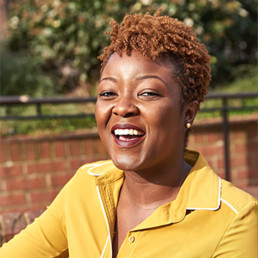
Written by Ayo Awotona
Ayo Awotona specializes in confidence building for girls in education. She does this through programs, workshops, and keynote speeches.
One of the great aspects of being a servant leader is being a light. It might sound strange but essentially it means having the ability to step into workplaces (physically or virtually) and speak hope, truth, and wisdom. It’s having the ability to help teams see situations with a new perspective and encourage them to have a can-do attitude.
Light is associated with visibility and helps to see things thoroughly, and servant leaders can provide that type of light. We can see things that others may not, such as highlighting why certain areas are not functioning well and cultivating a plan to tackle the problem.
How Can We Be Lights?
There are many ways we can be a light in our working environment and below I share four ways:
- Be perceptive/observant – This ultimately means being able to see deeper than what is on the surface; finding what systems are working or not and why, seeing how to implement new changes and reinforce what is already working well, etc.
- Be strategic – This definitely takes teamwork to brainstorm and create effective strategies to help run programmes, projects, or systems more smoothly.
- Spread hope – We can bring reassurance to others and brighten up the atmosphere by simply being hopeful and positive, reminding them of the vision and goal of the organisation/school.
- Embracing our individuality – Before being servant leaders, we are human with our own character traits and personalities. We can become more relatable and connect better with our colleagues/others because we come as ourselves.
What’s The Significance of Being A Light?
You might be wondering why it’s so important to be a light? Well, to give an illustration, we know there’s a stark contrast between darkness and light.
Imagine living in a house that is dimly lit for a whole week, and when the lights get fixed, everything becomes so much brighter and clearer. Similarly, we can be a light in dimly lit situations and see things through a new lens to help make what was ambiguous clear.
Many of us have experienced other people being lights in our world, maybe our mums, a friend, a mentor, etc. They brought hope, warmth, or made things visible that were not clear to us.
In Conclusion
In one way or another, all of us have the capability of being a light in each others’ lives. Specifically, in a working setting, servant leaders can be a light to spread hope, encourage change where necessary and bring new perspectives to improve overall work efficiency and efficacy.
The benefits that English second language workers can bring to your workplace

Written by Paul Holcroft
Paul Holcroft is the Managing Director at Croner.
Organisations are actively seeking out, not just multi-talented workers, but also multilingual employees to join their workforce.
Hiring workers who can fluently communicate in more than one language is seen as a huge positive business asset. Employees fluent through ‘lingua franca’ allows you to trade in wider foreign fields and on international scales.
Its significance proves business success goes far beyond just being fluent in English. And through that, more employers are seeing the benefit of recruiting multilingual and ethnically diverse workers.
Read how hiring an ethnically diverse workforce, with a penchant for languages, can prove beneficial for your brand-name and succession.
Understanding the customers’ needs on another level
Your brand-name will be publicly viewed as a workplace which understands the importance of diversity and inclusion. The benefits for this will return to you, through the growth of your clientele field. And the same will occur with your customers’ commitments.
It’s worth taking notes on the new market-realms you can effectively tap into. You’ll be able to appreciate and explore them, through better insight from your multilingual employees. Learning about local customs, rituals, and beliefs can increase customer relations and marketing services.
Stronger customer loyalty and relations
Through diverse workforces, you can bring about great benefits to your customer relations. A stronger rapport means business interaction will run more smoothly and efficiently.
Employees will share lingual mindsets and cultural backgrounds, which means they can establish queries to greater lengths and depths. And their understanding for customer satisfaction and objectives will remain completely exclusive.
Your clients will be left with confidence and appreciation for your tailored services. And with strengthened trust, you can keep confident that their loyalty will transpire into business profit and succession.
In-house translation support
You can effectively utilise employees who are bilingual, multilingual, or polyglots for any business projects that require language-centricity.
They can be used for a wide range of communicative work-tasks, like drafting legal contracts, writing dual-language materials, and international marketing campaigns. You’ll be guaranteed high quality content and easily accessible services.
Different level of talent and skill set
Employees with multilingual capabilities bring a completely different type of skill set to the table. Research by the National Institute of Health found bilingual people were able to switch tasks and process information faster than monolinguals.
It allowed employees to work efficiently within fast-moving work environments. Meaning they’ll adapt effectively to hypergrowth and business expansion; and can handle new and unfamiliar experiences easier than others.
Honing on this talent means workers will more likely remain in your employment. They’ll feel appreciated, valued, and aspire to progress further in their career with you.
Minimising the PR mistakes
Recruiting employees, fluent in the language you’re working in, allows you to expand without a fear for linguist mistakes.
Facing marketing errors and translation issues reflects badly on your business name. When venturing into new markets and cultural demographics, your projects shouldn’t manifest costly business mistakes.
If you do conduct business that extends geography, language, and culture, it’s vital to have an in-depth understanding in that field. And you should understand ways to adapt your values and intentions to succeed in the new market.
The importance of diversity and inclusion in business
Diversity and inclusion often go together – but are two completely different amenities.
You’ll benefit from utilising both strategies to strengthen equal opportunities in your workplace.
A diverse workplace will attract employees from all walks of life. Your business will be recognised as a place of equal opportunities and career progression.
It’s fair to say, not all businesses are able to hire candidates from a wide range of backgrounds and linguistics.
But through taking a proactive approach towards creating a diverse workforce, you’ll be able to attract talent and corporate reputation – all benefiting business prosperity and succession.
How colourful is your staffroom? Recruiting, retaining and supporting the careers of ethnically diverse teachers
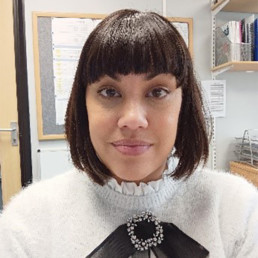
Written by Caroline Lowing
School Improvement Lead for HISP Multi-academy Trust. She was previously a Deputy Headteacher and has worked in Secondary education for 18 years. Caroline co-chairs the ASCL Ethnic Diversity Network and sits on Council for the South East of England. Caroline aims to be a Headteacher in the next 2 – 4 years.
Recently me and my colleague, Gurpall Badesha, presented to a room of school, college and trust leaders at the ASCL Conference on Recruiting and Retaining teachers of colour.
We hugely enjoyed the experience and got some great feedback but that wasn’t the best thing about it. The best thing was that most of the people in the room were white.
Since becoming co-chair of ASCL’s Ethnic Diversity Network I have really tried to carve out the time to be more informed and involved with the ED&I agenda and all of the fantastic organisations out there. I’ve attended meetings and webinars, I have had so many energising conversations and met so many inspirational people.
Even in the short time that I have been involved in this work I have noticed a big change. It is no secret that statistics around the recruitment, retention and career progression of people of colour in education are woeful. The DfE have reported that, in 2019, 85.7% of teachers were white with a staggering 92.7% of headteachers were white. Every way that you look at it, education has a big problem.
However, these statistics and what they mean for the young people that we serve can sometimes stop us in our tracks. The need to delve deeper and deeper into the implications is often overwhelming. I completely understand that we need to be heard and we need to share our own lived experiences. Goodness knows that I have told my own story many times and personal stories about, for example, being repeatedly mistaken for a teaching assistant when you are a Headteacher, are incredibly powerful.
The issue is that, often, the conversation will only go this far. The recent transformation in ED&I in education has been around what can actually do to enact change. This is why I was so pleased to see so many white school leaders in our session. These are people that want change and they want to learn how they can make that change from their position of relative privilege.
Providing solutions is hard. Coming up with ideas that work within every context is impossible. However, the magnitude of the problem coupled with the constant feeling of getting it wrong has led to a feeling of helplessness. When we shared ideas in our session, such as approaching parents from ethnically diverse backgrounds on the school gate to apply for governor roles, it was a joy to see people scribble it down to take back to base. Equally, it was wonderful to hear about schools that already have effective practices. For example, one school tracked its alumni through university and then approached students of colour to support them through joining the profession. I was frantically scribbling, then.
There is absolutely a lot to do to improve the recruitment and retention of people of colour in education but I am genuinely optimistic about the future, not least because school leaders on a mission get things done!
If you would like to know more about ASCL’s Ethnic Diversity Network then please contact Caroline at c.lowing@hispmat.org or she is on Twitter @caroline8779
A Call for Action
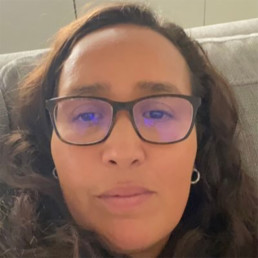
Written by Esther Mustamu-Daniels
Esther Mustamu-Daniels has 20 years of teaching experience working in London and the Middle East as a Class teacher, Education officer, Middle Leader and DEI Lead. Currently working at British School Muscat, Esther co-leads the DEI work across the whole school.
I read the most horrific story of a child being sexually assaulted by police in her school. Her teachers did nothing to protect her. Her parents were not called. She was strip searched while in the middle of an exam while on her menstrual cycle. She was not allowed to clean herself after. She was not checked upon to see if she was ok and then she was sent back to her exam to continue it. All by people who are supposed to protect and look after her. All I kept thinking about was what if this was my child? This happened two years ago and the conclusion of the investigation is that ‘racism was likely to have been an influencing factor’.
Unacceptable. The child is now in therapy traumatised by these events and now self harming.
What if this was your daughter? What would you do?
I have been thinking about the reports of Ukraine. How our children feel hearing these reports. Not only of the African students who have been denied entry on to trains and through borders but also of the reporting. How black and brown lives are deemed lesser and how this is normalised in our media. What impact is this having on our children? On all of them? How wars in certain countries are acceptable but in others ‘horrific’. How western media is more sympathetic towards a ‘type’ of refugee. What are we sharing with our children? With all of them? What are we teaching them? What kind of world are we showing them exists?
There are so many stories in the media that show our children the unjust and prejudiced way of the world; how can we counteract this? How can we show them that they are all important? That their lives matter? Put yourselves in their shoes and think about the messages that they are receiving. Think about what you can do to counter that.
If you are a teacher, what do you show your children? The stories and images you choose to share have a huge impact. The authors you share and the lessons you teach that include positive role models, narratives and histories will all have an impact. Are you considering the impact that current events are having on your children? What are you doing to support them? Are you calling out if you see racist or biased behaviour?
If you are a leader, what are you doing to counter these messages? Are you holding spaces for people to share and raise concerns with you? Are you actively trying to ensure that your establishment does not reinforce these messages? What policies do you have in place? What training do you have in place? If you are not aware or are not sure how to navigate these situations, are you seeking support and advice from those who do know?
This is a call for action to break these biases. Are you aware of what some of your children and colleagues may be facing? Are you aware of some of their experiences? Could you even be responsible for some of their experiences? Imagine it was you? Imagine it was your family? What would you do? What will you do? What action will you take? What will you do today to support our future generations and all of our children and adults who are impacted and continue to be impacted by the traumas they witness?
Take action for what is right in whichever area you occupy. We all have the power to take this action and make a difference so that the bias stops. So our children and our communities are safe; psychologically and physically. What will you do?
Making the DEI mission of your school mean more than just words.
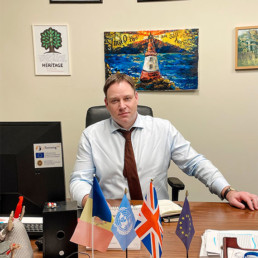
Written by Rob Ford
Rob is an educator for nearly 30 years, a history and politics teacher, a school leader in various schools in the UK and was principal of Wyedean School in the UK, before being appointed as Director of Heritage International School group.
“Our lives begin to end the day we become silent about the things that matter”. MLK
As my colleague sobbed with frustration and emotion in my room one afternoon, after a long day at school, going through what had just happened in class, I realised in that moment how powerless I felt there and then as a person but I knew how powerful my school’s culture, ethos and policies truly were in these awful moments. More than just words when put to the test to support my colleague as she asked for my help as a school leader.
My colleague, an international teacher, had been on the receiving end of a racist comment and it underlined to me just how much work we still have to do in our schools and communities to ensure such hurtful and offensive moments don’t happen especially when it comes to the words, beliefs and actions of children and young people in our care.
When we found the students responsible and put in place the necessary sanctions & follow up actions warranted, the comment from one parent said this to try and downplay the incident; “It’s like he was at the same table when the waiter was abused but all get thrown out of the restaurant”.
Illustrating perfectly with the choice of words that even the most liberal, educated, wordly wise and enlightened of school communities, especially those with many nationalities and a strong global outlook, need to continue to work together with the whole community, to challenge and change such mindsets. In contrast, the students were actually very contrite, apologised, owned their responsibility and repaired the damage done with their teacher who was prepared to move forward with them on this basis.
We cannot ever be silent on such issues as school leaders, nor should we feel powerless individually to tackle these issues successfully. We need to prioritise clear policies, culture, staff training and meaningful education in schools around issues & attitudes such as racism, nationalism, prejudice and hate that, unfortunately, have become more widespread in the 2020s around the globe. Doing nothing or hoping it won’t ever be something you will have to address is not an option either for any school leader.
Your school culture is not international because it says it in the title.
It is always quite surprising how many school leaders feel that issues around racism will never affect them because they are “an international school”. This is a very false assumption as much as stating how many different nationalities are in the school community. It doesn’t mean a school is diverse, equitable or inclusive and it’s a “lazy assumption” and derelict to avoid having a practical strategy in place because you say you are in the school’s name. Words matter here.
You need a robust Diversity, Equity and Inclusion Policy in place.
Your DEI policy should sit alongside the handful of ones, like Safeguarding, SEND, Teaching and Learning, Complaints, that you have in crumpled paper form, covered in notes and highlighter on your desk as a school leader because they are used as part and parcel of daily school life. There are some really effective, comprehensive and robust DEI policies out there to look at and adapt to your school.
Your DEI policy needs to be regularly reviewed, a governor responsible, a senior leader made responsible for it, and for it to be made publicly available, for your whole community to be aware of it with the key points clear. Get good outside experts to scrutinise it and for them to challenge you as a leader, your governors and your team on it as COBIS did to me and my school last year as part of our standards accreditation.
You need regular CPD for staff awareness and all your team believe and operate in this culture.
I couldn’t imagine annual staff training in August or regular CPD throughout the year, without time spent on our DEI, any more than I would leave safeguarding, the fire drill or Teaching and Learning out of what is central in the education and duty of care towards children. There are some incredible voices and forums out there for schools to follow and engage with and bring that outside expertise and experience to your school. Especially for schools and communities operating in homogenised and monoglot environments. Your DEI policy needs to be even more central in your strategy.
There are some incredible voices and forums out there for schools to follow and engage with and bring that outside expertise and experience to your school so tap into it; for example we have used Jon Gibson and Backdrop Education for staff training around inclusion and equity, America House in Chisinau extensively on diversity training, our governors have worked with Jackie Beard, a NLG and used the DEI programmes from NGA. COBIS have been working with Angela Browne and Hannah Wilson to deliver DEI training in schools and we are signing staff up for this outstanding & highly recommended programme for the courses this year. We also follow Hannah’s work in offering free DEI conferences and webinars to educators in the UK and around the World.
Raise student (and parental) awareness regularly, celebrating and commemorating our global, diverse communities in school daily life.
This is where you need to be prepared to be less than silent, especially in a World of labels thrown at schools such as “woke” or “cancel culture” for daring to celebrate and commemorate events in the global calendar such as Black History Month or Holocaust Remembrance. Do not shy away from what may be perceived as difficult topics or fearful of reactions.
In those school boards in the USA, where some parent groups are challenging schools for holding Black History Month events this February, because they believe it is teaching “CRT” (critical race theory), school leaders are tackling this challenge head on legally as we finally see this “false equivalence” called out and for a many, a hill definitely worth a stand on.
In Eastern Europe, the ugly racism black English footballers endured recently playing Hungary, became a very good debate topic for our IGCSE and A Level students and I was proud to see all of them call it out for the hate and ugliness it was. These are not the values these students want or their part of the world to be associated with.
We also are facing in Eastern Europe the contextual challenge of the conflict of Russia towards Ukraine, with students of both countries in our community, so we have worked with teachers on how to handle difficult questions on it and deal with issues that may arise from students in a safe arena of dialogue. This is the very reason why we educate children.
Make your community more inclusive and diverse.
This should include a recruitment policy that is more than just centred towards white Anglo-American educators and truly brings the global community to your school. I still hear the positive words of one of my students when she said coming to Heritage is like going abroad each day.
The same is about the speakers you have in school, the role models for children chosen and what you study in the curriculum. I have no issue with special days or months for events in the global curriculum calendar because it is a good excuse to highlight the work that is consciously there daily and it is not just for one day.
Schools shouldn’t worry about the odd criticism on social media because you celebrate or commemorate one day either, as long as this isn’t the only time some topics or events are looked at and studied. A “one off” is not a school culture but it is a good starting point to build on. Throughout this academic year, the UN’s #FightRacism campaign has underscored so many wider curricular events especially through whole school assemblies and cross curricular days we have aligned with as a school.
Conclusion.
We should live up to our school’s mission, culture and ethos, especially where we want future leaders to lead with the very values we claim we are about in our schools to young people including diversity, equity, justice and inclusion for a better future. Or as school leaders we will end up remaining silent on what matters most.
Ukraine, Russia, Palestine, Israel, Afghanistan, Covid-19, Climate Change…and so much more: how to get Political Impartiality right.
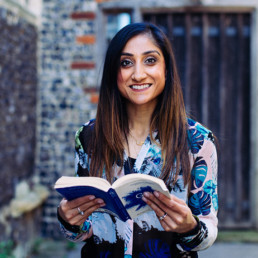
Written by Zahara Chowdhury
Zahara is founder and editor of the blog and podcast, School Should Be, a platform that explores a range of topics helping students, teachers and parents on how to ‘adult well’, together. She is a DEI lead across 2 secondary schools and advises schools on how to create positive and progressive cultures for staff and students. Zahara is a previous Head of English, Associate Senior Leader and Education and Wellbeing Consultant.
The last few weeks, or perhaps years, feel like a surreal blur when thinking about our global context. From the outbreak of Covid-19 to the recent war in Ukraine, it is now as if we are living through the dystopian and historical literature I once taught through fictional and non-fiction texts in the classroom. As teachers and educators there is an expectation that we not only educate students about these topics, but we must know and be aware of every article and news feed that emerges on a daily basis. In many ways, the recent Political Impartiality Guidance released by the DfE was as much to refresh our responsibilities as educators, but also to reassure teaching professionals too; unfortunately, social media coverage and wider analysis of the guidance seems to suggest the opposite. Our students and colleagues want to learn, discuss and explore current affairs, but how do we do this in light of this guidance and a school climate, where GCSEs, A Levels, limited time and limited resources dominate?
Much of the specific economic and political facts go over my head (even as a DEI Lead). Equally, my advice to teachers and schools is that you do not need to be a global, political, geographical or economic expert to address these matters. Instead, in order to get political impartiality ‘right’, whilst prioritising curriculum, teaching, learning and pastoral needs, we must remember what teachers and schools do best: we can critically navigate and evaluate the differing perspectives of world politics without being political. We can support students in how to challenge and respectfully discuss contentious topics. We can also help our students learn to be empathetic, acknowledge their emotions whilst being mindful of others too.
However, this in itself is challenging considering the ‘diversity’ within teacher training and lived experiences too. To help teachers and education professionals, below are some key learning points and explanations that can help schools get political impartiality right; if we are aware of them, we are more likely to create inclusive, safe spaces for all of our students and staff too.
Media Bias
There has been an outpouring of sympathy, global empathy, local and community charity and Influencer support for Ukrainian refugees – and rightly so. It has been heart-warming and necessary to see so many come together at a time of intense suffering to protect and support our human race. However, the media coverage and perception of refugee status has been problematic. In many ways, it seems some Western media outlets have usualised poverty, strife, pain and refugee status for particular races and regions but portray it as wrong for Western, white, ‘blue eyed’ individuals to experience the same. The question for teachers that might arise here is how do we explore such controversial media bias without making it ‘political’?
Aisha Thomas, founder of Representation Matters, asks a pivotal question: what story is your curriculum telling – a question that could not be more relevant in light of media bias, social media algorithms and being politically impartial in the classroom.
- Does your curriculum teach success stories from the East, North, South and West?
- Does it teach socio economic barriers (and opportunities) in the West, East, North and South?
- Is it gender equitable?
- Does it elevate the voices of all protected characteristics? Does every member of your class ‘see’ and ‘hear’ themselves in lessons?
- Is it intersectional?
- Is it fair?
- Is it truthful?
- Does it allow students to question, critique and evaluate the situations independently?
These are worthwhile questions to bring to the forefront of any CPD training and classroom work you do to strategically address belonging, equity, anti-bullying and teacher/student safety.
The media sources referenced above also contain bias – pretty much everything we read, see and explore does. However, it is important to explore the language and literacy of a range of media sources so students are able to have critical, mature and nuanced discussions – what every school ultimately aspires to!
Selective Empathy
Selective empathy is when we empathise with a particular group, particular causes and people for many reasons: it is dominant in the news; we relate to it, or maybe it feels close to ‘home’. Whatever ‘it’ is, it somehow resonates so much that we find ourselves becoming socially just, publicly outraged and visibly allying with a particular cause or issue. For example, you may notice that certain members of staff or students visibly ally with some causes more than others, whether that be the war in Ukraine, the Israeli-Palestinian conflict, anti-Semitism or LGBT+ rights.
Being selective in how and with whom we empathise in a globally diverse society is problematic. In many ways, it can lead to ‘whataboutisms’, alienation and further antagonism. If we are really committed to creating a diverse and inclusive world where protected characteristics need not exist and everyone feels a sense of belonging, we must approach all areas of DEI consistently – with nuance and transparent, shared values. Schools, teachers and students will need to ask themselves how they are creating safe, equitable spaces of belonging regardless of geography, economics, beliefs and values. Individuals with and without protected characteristics, individuals from marginalised and non-marginalised backgrounds need work together to create a sustainable culture for DEI. Equally, centralising ‘lived experiences’, the intersections of society and people who often fall victim to decisions and events beyond their control are who we need to ally with – they need our voice and their voices amplified. This is not political, that is just empathy and being human.
However, acknowledging our empathetic responsibilities can feel jarring; it can make some feel uncomfortable, critique ‘woke culture’ and more. Some may feel they are able to unapologetically selectively empathise – why should it matter that I empathise with one cause more than another? Why does it matter that I share my outrage for the war in Ukraine but not Syria? The answer to this question requires some introspective work:
- if we felt uncomfortable advocating for the rights and safety of Palestinian citizens in the Spring/summer of 2021, but little discomfort advocating for the safety and rights of Israeli citizens (I am using citizens and geography intentionally here as this is not a Semitic discussion), we must ask why? Does this discomfort or lack of responsibility enter your sphere of allyship with Ukrainian refugees? If not, why? If yes, why? If you feel your heart pang when you see your child or your students in a young Ukrainian child, but not in a Palestinian, Afghan or Syrian child, question why? If you are collecting charitable donations for Ukrainian refugees but this did not necessarily feel as urgent or necessary last summer again, question it. Do you find supporting and understanding the barriers faced by the LGBT+ community more accessible than anti-racism? Why?
These are difficult questions. They are challenging, jarring and some may choose to dismiss them immediately. I encourage you to work through the discomfort and potential feelings of offence. This is not a criticism, unnecessary ‘wokeism’ or misplaced social justice work; this is a call to critically address and navigate feelings of empathy. Empathy is a skill that needs to be nurtured and learned. Allyship is a set of actions that need to be consistently practiced and addressed. This is only possible if we are always sitting and working through our discomfort. It does not need to shake our core values and beliefs – instead, it reinforces that our core values and beliefs are wholly inclusive and respectful of all human life – not selective.
Intersectionality
The last 3 years isn’t a movie set in the past or a book we might be currently studying in lessons. It isn’t a case study for exam boards (yet). It is the lived experience of all of us. There are intersections to recognise, people to listen to and an opportunity to learn about globalisation, economics and geography in real life. Ask students what changes they’ve noticed: Chanel, Netflix and more no longer trading in Russia- what does this actually mean for the global economy, but also the different intersections of society? Create opportunities to learn about the intersections of economics and business and what the world will look like beyond this war. Ask students to question the impact of certain decisions and suggestions they see (and potentially support or refute) on social media. This can help overcome the fear and uncertainty associated with the current global climate – along with create opportunities for young people in a new and equitable manner.
Explore global inequality and diverse perspectives – why and how is the current world a result of a past world? There are multiple answers to explore here. This is where history, PSHE, RE, Geography, Economics, Philosophy and Politics can take precedence on the curriculum. Consider the questions and ways in which these topics are explored in their relative subject areas and how other subject areas can adopt their approaches. How can we make changes or additions to curriculum areas to explore wider perspectives?
Intersectionality is in effect, the very key to the success of every student, regardless of their background, protected characteristic, lived experience and more. An appreciation and amplification of nuance within our schools, society, student and staff body will create a culture of belonging and there is plenty of research to suggest that ‘belonging’ leads to success.
It is possible to remain politically impartial and work within a rich and valuable teaching environment. If we take a proactive, diverse and critical approach to current affairs we will be able to overcome the fear and discomfort associated with discussing ever-changing global and social climates. And, ultimately, we have the power in a classroom to create trusting and safe spaces for our students, communities and professional bodies – something that often goes amiss in the ‘politics of social media!
Cultural Intelligence
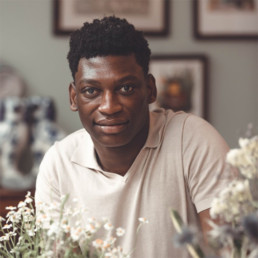
Written by Wangu Chafuwa
As a first generation immigrant, Wangu’s vantage as an insider-outsider led to a fascination in people, social relations and culture, which led to advocacy work with the British Youth Council. Wangu now uses his social consciousness and anthropological perspectives to bring human centred insights to the world of work.
Culture – and how we move through it – has also become one of the tabloids’ favourite news beats. How often do we see articles bemoaning the rise of cancel culture or so called culture wars? It’s understandable why lots of us feel nervous about approaching culture.
Even in itself culture is a difficult term to define. The Oxford English Dictionary contains 6 distinctly separate definitions of it: ranging from ‘the civilization, customs, artistic achievements, etc., of a people’; to ‘the artificial development of microscopic organisms, esp. bacteria, in specially prepared media’; to ‘the training, development, and refinement of mind, tastes, and manners’.
Culture is one of those funny little terms we all vaguely seem to understand but struggle to pin a precise meaning to. Which poses a problem as we’re routinely expected to navigate increasingly complex cultural environments.
It’s the reason why Cultural Intelligence (or CQ, like IQ) has been described as one of the essential leadership skills of the future. But how well do we understand what that really means?
There’s a phrase that’s probably misquoted to Einstein that says ‘intelligence is not the ability to store information, but to know where to find it’. Often when people hear Cultural Intelligence they think that it means having an itinerary of do’s and don’ts for cross cultural
interactions. Having this knowledge is obviously helpful, but the thing about Cultural Intelligence is that it is a practice – it has to be applied.
“But how?”, I hear you utter in anguish from beyond the screen.
In his 2011 book, “The Cultural Intelligence Difference,” Dr David Livermore highlights four capabilities to develop to effectively practise Cultural Intelligence:
CQ Knowledge relating to knowing different cultural expectations and the nuances of intersectional cultural expressions.
CQ Strategy relating to your ability to plan and prepare for multicultural interactions.
CQ Action relating to how appropriately you adapt your behaviour to accommodate different cultural contexts.
CQ Drive your interest and motivation to keep finding out more about different cultures.
Cultural Intelligence is the acknowledgement of the fact we all come from different places that hold deep meaning to us and a respect for how this shapes our individual perspectives. No one wants to be treated in aggregate. Practising Cultural Intelligence allows us to see people in their rich difference rather than one in an anonymous blob.
Our struggle to get to a singular definition of culture isn’t a failure to express, it’s a representation of the living, transforming and always shared experience that is culture.
We can see this buzzing diversity inherent in culture in the sheer number of different cultural expressions living around us. In all this contrast and colour is an infinity of possibilities. And the ever-present potential of friction.
The capabilities underpinning Cultural Intelligence may sound a bit jargony but luckily underpinning them is an innate capability to navigate our inherent differences. We are social creatures – all possessing empathy muscles that hardwire us to build bridges between us.
The Intersection of Race and Neurodivergence

Written by Anu Roy
Anu is a TeachFirst leadership Alumni and digital trustee and teacher committee lead for charities in England and Scotland. She is currently a digital curriculum development manager and works in inclusive education projects incorporating tech.
‘Just stop fidgeting please’.
I have been told this my entire life and truthfully, I have then said the same sentence to students during a lesson. Students who do not seem focused, who might have lost their pen, cannot find the right page. As teachers we all know these students, but with that sentence -do we run the risk of reducing them to something they cannot control?
Traditionally, the narrative around restless behaviour in the classroom can be characterised as an uninterested student, potentially becoming disruptive if the teacher does not intervene. However, neurodivergent students with ADHD may find it difficult to focus, feel restless and struggle to overcome impulsive behaviour. This is particularly challenging for BAME neurodivergent students who are continually underdiagnosed for ADHD, making it harder to raise awareness and create an action plan to support them.
In our current education system, I have realised that there are BAME students who have struggled from nursery all the way to their graduation at university with difficulties which arise from ADHD as a root cause, but they were never diagnosed. The inequities of treatment and resources coupled with the systemic barriers faced by people of colour can mean that the joy of learning is lost when these students feel like they are not meant to succeed. Instead, educators have a duty to shape systems which support neurodivergent students and address their barriers to learning.
The next time we see a student looking restless, instead of assuming they are disinterested, it is important for us to take the time and speak with them about whether they have trouble concentrating and what measures we can put in place to help them navigate that. When all students are excited and keen to learn, what we can accomplish in the classroom knows no limits.

